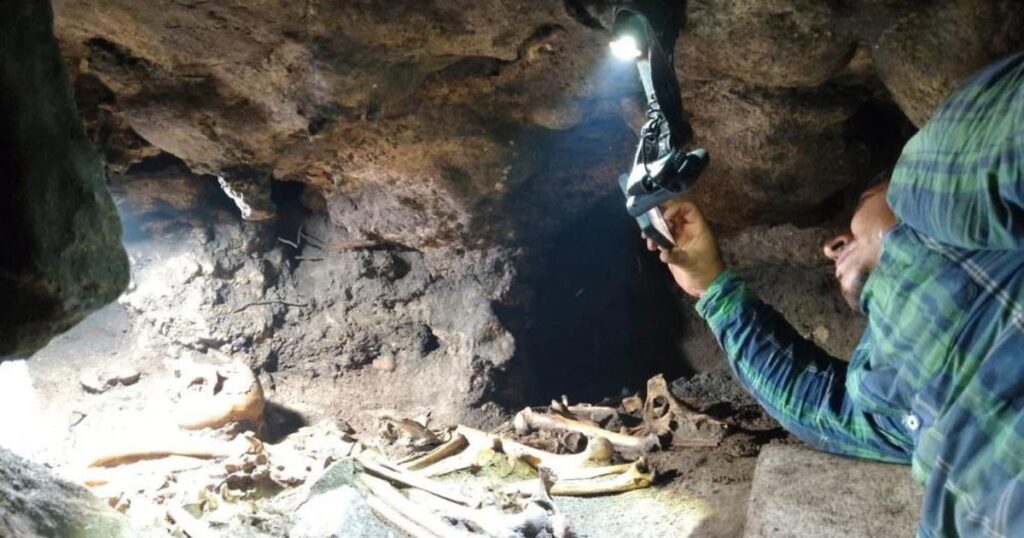Researchers carrying out work at a Mayan burial site in Mexico said this week they found a sealed-off cave that contained human skeletons, along with the remains of over 20 types of animals.
The research work is being conducted in Tulum by Mexico’s federal Ministry of Culture, through the country’s National Institute of Anthropology and History, according to a news release from the institute.
Inside a walled area on the site, researchers who were trying to create a new path between temples found a cave sealed with a large boulder. The entrance to the cave was also decorated with a small sea snail that was stuck to the rock with stucco, confirming that the cave was sealed by Mayans.
Archaeologists exploring the cave removed the boulder and discovered the rock was “literally splitting” a human skeleton in half. Inside they found “at least two small chambers” within the structure. Both chambers were small, only about nine feet by six feet and about sixteen inches high. Within those chambers, “so far, eight burials have been recorded,” the news release said.
Ministry of Culture and the National Institute of Anthropology and History
Most of those burials were of adults, the researchers said, and the remains found were “in good condition” because of the environmental conditions inside the chambers.
The remains are being investigated in laboratories associated with the National Institute of Anthropology and History.
In addition to the human remains, researchers found “a large number of skeletal remains” of animals where the burials had been conducted. The animals included a domestic dog, blood-sucking bats, a deer, an armadillo, multiple birds and reptiles including a sea turtle, and fish including tiger sharks and barracuda. The remains of crustaceans, mollusks and amphibians were also found.
Some of the bones had marks where they had been cut, researchers said, and others had been worked into artifacts like needles or fan handles. This is “characteristic of the area,” researchers said.
Ceramic fragments associated with the burials were also found in the chambers.
The research within the chambers has been difficult because of the small work area, “almost non-existent” lighting and high humidity and temperatures in the caves. The cave also is inhabited by insects that “complicate the activities” of the archeaology team, according to the news release.
New technologies, including the use of laser scanners and high-resolution photography, have helped researchers preserve the cave and its archaeological elements, the news release said. Those tools will be used to create 3-D models with “a high degree of detail and precision” that will allow researchers to present virtual tours of the cave’s interior.
Research in the cave will continue for the rest of the year, officials said.

